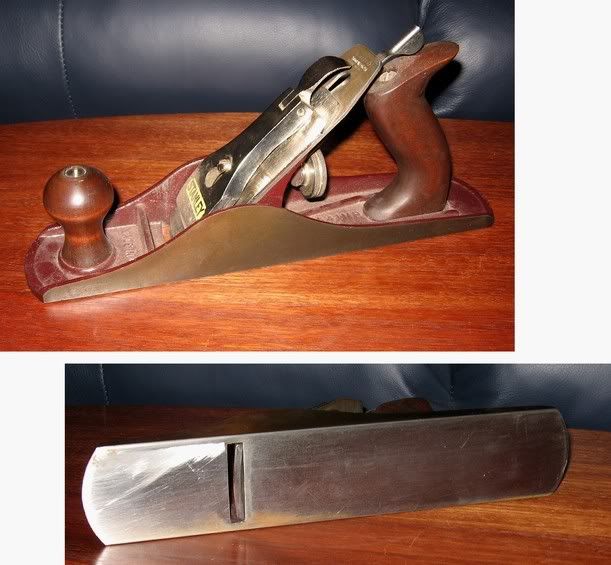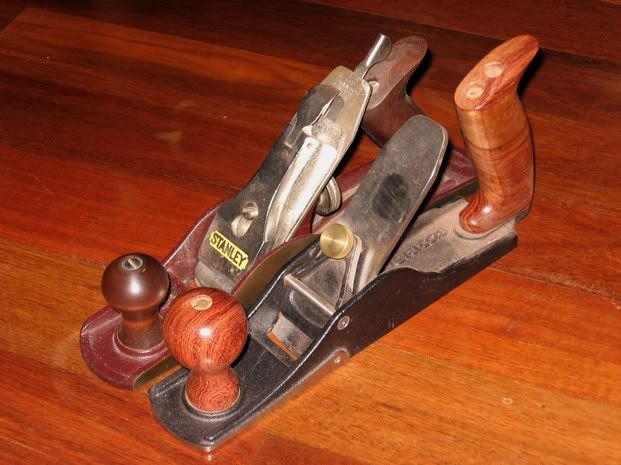paulc":1tfzh50d said:
... so what hand plane do I need , Is it a try plane ? if so , what size would be best and what make would you recommend?
If you can borrow a copy of Cosman's Rough to Ready DVD, or Schwarz's Coarse, Medium, Fine DVD, watching them would pay off well. It's one thing to make recommendations, another to watch them in action.
Not always convenient, though. Perhaps a lending library of sorts would be possible here one day?
Ok. Here's how I do it--when I do so totally by hand.
First, I cut all board to rough lengths and widths. This cuts down on how much work is involved.
I then make a judgement on which side will eventually be the viewed side, the show face. This may change, but for now I mark an arrow on the end of the board pointing to that face. And I place this side down on the bench.
If a board is in poor shape, I start with what would be called a Jr. Jack--about 12" in length. Until very recently, I had a Stanley #5 1/4 I had converted. Worked well. This Jr. Jack is simply a narrow Jack plane I cut down in length to about 12". It has a very open mouth and a heavily cambered blade.
I remove all the obvious high spots. Typically the plane is moving at a diagonal across the face of a board, to straight across. I remove obvious high spots before even pulling out the winding sticks--which half the time is simply two planes laid on the sides. Most often I have one at an end of the board which sits fairly flat on the bench. I often will mark spots with a crayon as I move one of the planes towards the other. Then I remove those high spots.
I'll flip the board over and check how it sits on the bench--does it rock, can I see more high/low spots? If so, I raise it and mark those spots. Then I flatten some more until it sits without movement when flipped onto the side I am flattening.
Then the next plane I typically use is what would be called a foreplane. Less camber. More lengthwise planing. Once that has worked its magic, then I either use what would be called a try or jointer plane, depending on the length of the board. If it is short enough, I may just use a foreplane which has even less camber to "pre-smooth" this surface.
From there, I leave that side alone and flip the board. I either gauge a line around the board using the lowest spot I find as the line I will flatten the second side to.
Once it is in the same shape as the first side, I decide which will really be the "show" side. That side I will use a smoother on. The other side I will also use a smoother on, but I am not trying to make it really fine.
paulc":1tfzh50d said:
... Also can the blades be sharpened on a average size waterstone (2 inches or so wide) or do I need to get a bigger one ?
That size stone should work for nearly any plane blade. If you encounter a wider blade, consider sharpening with the blade turned sideways to the stone, moving the blade lengthwise. You can sharpen nearly any width blade on nearly any stone this way.
Take care, Mike






